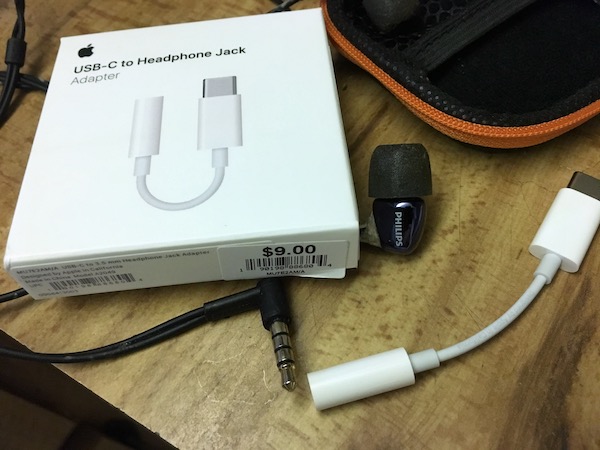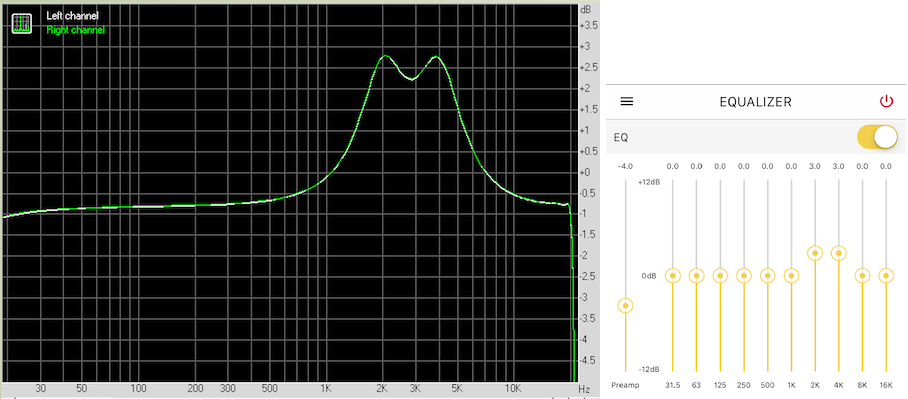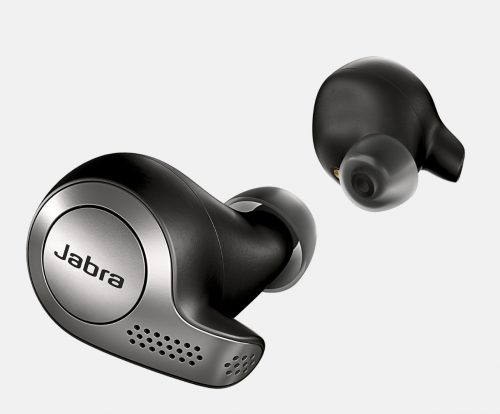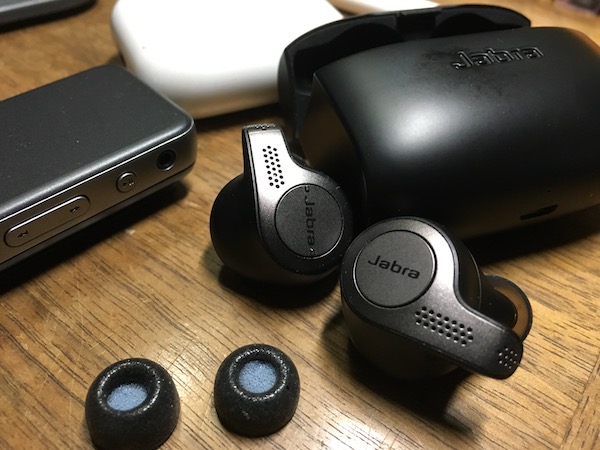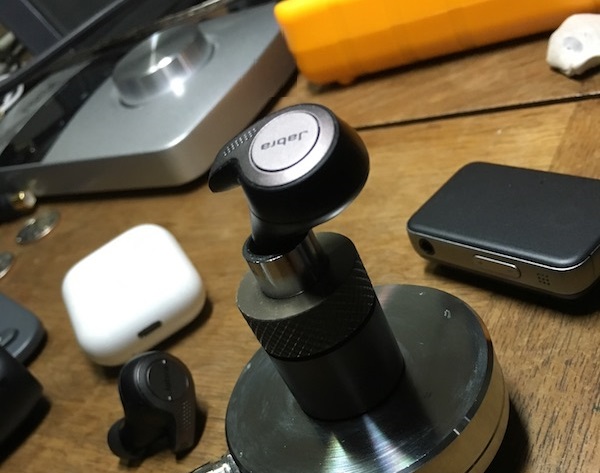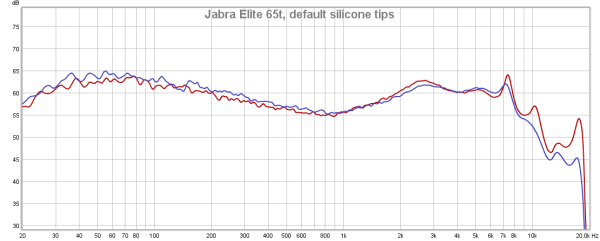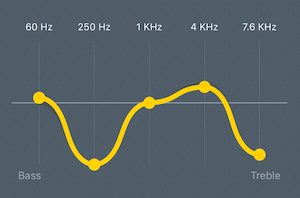This isn't really a formal review. It's just a fitting place to post my experience with the product so that I can link to it in forum discussions without having to retype the same comments over again. I suppose it kinda sorta works as a review.

It used to be $99?
The EO-IG955 is the earphone that originally came bundled with the Samsung Galaxy S8. It's also sold as a separate product, retailing for around 100 USD. Samsung acquired Harman and its subsidiaries, including AKG, who was responsible for tuning the EO-IG955's sound.

The retail box. Source: Samsung Electronics home page
The EO-IG955 is also sold by itself without the box and the case. I got a three-pack from e-Bay for $20, but I've seen it sold for even less than that. Not bad for an IEM that usually retails for $99. But I hear that there are many fakes out there, and there are even guides online to help you spot one.
So what do we get in the box? The EO-IG955 has two transducers: one 11mm-diameter driver for the low frequencies, and one 8mm driver for the treble.
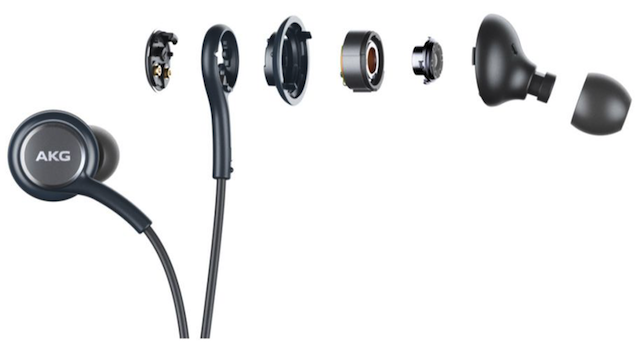
Exploded view of the Samsung EO-IG955. Source: Samsung Electronics home page
Zerodecibel has a nice tear-down on their site: link
A word or two about the measurements
The first two sets of measurements that I found were at zerodecibel: link and The Ear-fi Blog: link. They provide lots of useful information like impedance vs. frequency, and distortion. I don't think it's the complete story though, because they each measured only one sample, probably from a retail box. Here's what I got from the three-pack:

Frequency response of the IEMs in the 3-pack from e-Bay
The bass response is obviously inconsistent, especially compared to other OEM-bundled IEMs like the LG Quadbeat 3 and the Sony MH755, whose performances are more repeatable. One of my samples has too much bass for my liking, and another one has mismatched channels. I'll call these samples 3 and 2, respectively.
Some of you are probably itching to blame Samsung's bad quality control. Are these dirt cheap IEMs the factory rejects that failed to pass QC? Or is the IEM's design to blame—that it's not robust, and that small changes in venting cause large changes in the response? I don't mind too much. My expectations weren't that high for such an inexpensive e-Bay 3-pack. Plus, you can sometimes fix the bass response. More on this later.
At least I got one pair that sounded fine from the start. Sample 1, the one with the least amount of bass, sounds best to me:

Frequency response of sample 1
The EO-IG955 responds predictably to simple, reversible mods. Blocking the rear vent and partially or completely sealing the seam between the front and the rear of the IEM has this effect on the bass:

Effect of blocking the rear vent and sealing the rear cavity
Light gray: stock
Magenta: complete seal of rear cavity
Others: varying amounts of leakage
Here's where to make the seal:

Where to seal the rear cavity
Varying the leakage gives us some control over the bass response. Thus, we have a way of reducing the bass on sample 3 and fixing the mismatch on sample 2.
The EO-IG955 also responds nicely to dampers placed in front of the output tube. Use your favorite damping material: tea bag filters, microfiber cloth, micropore tape, etc. I'm lazy, so I just put a little bit of earbud foam inside the silicone sleeve, and placed as close to the grille as possible.

Effect of earbud foam damper in the output tube
Light gray: stock, left channel
Some folks find the response at 3 kHz too intense, so here's a way to reduce it. The default response is a good match for my hearing, so don't do this. What about the spike at 8 kHz? That comes from the ear canal's half-wavelength resonance. A foam tip can damp its response:

Frequency response with Comply TX400 foam tip
Light gray: stock, left channel
It's getting close to the Harman IE target, so I should like this smoother response, right? Not so fast…
Insertion depth or the lack thereof
When I listened to sample 1, I thought it sounded fine. If I were being picky, I’d say that the treble sounds a bit off. Some sounds were emphasized, and some sounds were withdrawn. Vocals had a slightly scratchy character, as if the singers were straining. Snare drums sounded a bit too sharp with their attack, perhaps with too much snap, and they took on a hollow character, as if listening through a tube. At the same time cymbals and hi hats sounded suppressed. Shakers sounded somewhat withdrawn, and they took on the same scratchy and hollow sound. Very often, IEMs overdo the sparkle, sometimes annoyingly so. Here’s, it’s the reverse.
(Not that it matters much, but among the tracks that I used were Bird on a Wire and Cousin Dupree. I don’t necessarily listen to these artists, but Harman’s research had indicated that their listeners, novice and trained alike, were more discriminating when they evaluated headphones with these tracks, compared to others on their play list.)
After investigating with a sine sweep, I found that I hear the peak at 6.3 kHz instead of 8 kHz when I inserted it in my ears as deep as I could. The EO-IG955’s housing and strain relief make deeper insertion impossible. (To verify this, I used a program like Sinegen, or a finer version of this online tone generator: https://www.szynalski.com/tone-generator/). I later made a few more measurements, this time with shallow insertion. The following is the closest I got to what I feel I actually hear:

Frequency response with shallow insertion
Light gray: deeper insertion, left channel
There's a big slide in the response after 7 kHz. I'm actually hearing the peak lower, so 7 kHz sounds a lot softer to me than 6 kHz. The smoothest response comes when the insertion depth causes an 8 kHz peak. That’s almost 6 mm deeper that what’s possible with my ears. Any deeper, and we get a dip in the response at 7 kHz. This can be seen in zerodecibel’s and The Ear-fi Blog’s measurements, which show the peak at 9k. The EO-IG955 is a shallow-insertion IEM. I doubt most adults can get it deep enough in their ears for the heard response to match those measurements.
The 6.3 kHz peak that I’m hearing doesn’t sound as severe as it looks in the graph. Using a parametric EQ to flatten it and smoothen the treble response makes a subtle difference, even though the adjustment is several dB. But the sine sweep sounds a lot smoother afterwards, and it makes all the difference. Subtle change as it is, the treble now sounds more natural, with the realism restored.
Unfortunately, a system-wide parametric EQ still isn’t available for my mobile devices unless it’s built into the earphones themselves, like on Jaybird IEMs. The Radsone ES100’s 10-band graphic EQ can’t make these fine adjustments. They’ve announced that a parametric EQ is planned for a future firmware update, but that was at least eight months ago; it’s still vaporware as of this writing.
I found that an absorbent foam tip brings the response closer to what I like, and makes it easier to fix with a graphic equalizer:

Frequency response with Comply TX400 tips and shallow insertion
Light gray: shallow insertion with silicone tips
The TX400 damps the ear canal resonance, makes the transition less abrupt, and brings up the response from 8-10 kHz. Indeed, the sine sweep sounds smoother with the TX400. The response above 10k isn’t as strong, so there isn’t as much “air” as before. But overall, it sounds less wrong, and it’s easier to EQ.
Comparisons
The obvious comparison is with other OEM-bundled earphones, like the LG Quadbeat series and the Sony MH series. Here are some that come close to my sample 1:

Blue: LG Quadbeat 3 tuned by AKG
Green: Sony MH755
Red: Moondrop Spaceship
Light gray: Samsung EO-IG955, sample1 and sample 3
The MH755 (my samples at least) have too much low bass. Fortunately, it’s easy to reduce with EQ or simple acoustic mods. The peak from the ear canal resonance is just a small bump unless you get a sample with more damping at the output tube's opening. It’s more forgiving of differences in insertion depth than the LG or the Samsung. I can insert it deeper in the ear than the EO-IG955, especially with the small tips, because the housing and the strain relief don’t get in the way too much. The high frequency extension is ok, but it’s not as strong as on the Samsung, with its dedicated tweeter.
The LG Quadbeat 3 sounds similar to the MH755, but its deep bass isn’t as crazy. The peak from the canal resonance is more exposed, but It’s not that noticeable unless you’re listening for it or your music has a lot of content at that frequency. My QB3 is the variant tuned by AKG. It has less bass than the non-AKG model, but it has a noticeable peak at 4.5 kHz. I’ve heard the regular QB3, which I prefer when I shelve down its bass.
I tossed a Moondrop Spaceship in the comparison even though it’s not an OEM-bundled earphone, because it’s cheap and its frequency response is similar from 100 Hz to 3 kHz. It sounds closer to my EO-IG955 sample 1 than the Moondrop Crescent. Its response in the bottom octave is the weakest here, and you can see the roll-off in the graph. Maybe a partial cover of its front vent will bring it more in line with the rest of the spectrum. I used to have another pair of the Spaceship, and its bass was similar. The treble, however, is different between samples—different, even between channels of the same pair. It’s not as consistent with channel matching as the Crescent, judging from my pair, and measurements I’ve seen online. Its treble is like the MH755’s, with the not-so-apparent peak from the canal resonance. Like the MH755, it’s also more forgiving of differences in insertion depth than the Samsung. The Spaceship isn’t as airy sounding as the Crescent, or the MH755 for that matter, let alone the Samsung.
In the graph, you can see in light gray that the EO-IG955’s bass can be very different from sample to sample. It also shows what can happen to the treble depending on how deeply it is inserted in the ear.
Wrap up
Overall, I think this is a good sounding IEM. The engineering needed for a two-way design seemed to have been done competently, which is more than I can say for some cheap multi-driver chi-fi designs. Best of all is the value: the IEM that comes in a $99 box set can be had dirt cheap online.

Update: August 17, 2019

Left: stock tip
Middle: wide-bore tip
Right: Comply TX400
I tried it with wide bore tips. The difference in diameter is actually greater than it looks in the photo above. I didn't notice much of a difference. If anything, it made deeper insertion more difficult. My measurements didn't reveal anything out of the ordinary either:

Samsung EO-IG955 sample 1, frequency response with wide bore tip
Red: deep insertion
Green: shallow insertion
Light gray: stock tip, both deep and shallow insertion shown
The insertion depth made a much bigger difference in the sound than switching to the wide bore tip. Compared to many others, this IEM is more sensitive to differences in the way it is inserted. The choice of tip might make deeper insertion easier, or could change the effective length of the ear canal's tube. What I suspect is that a longer silicone tip can produce a different effective distance to the eardrum. I might be able to take advantage of that idea later.

It used to be $99?
The EO-IG955 is the earphone that originally came bundled with the Samsung Galaxy S8. It's also sold as a separate product, retailing for around 100 USD. Samsung acquired Harman and its subsidiaries, including AKG, who was responsible for tuning the EO-IG955's sound.

The retail box. Source: Samsung Electronics home page
The EO-IG955 is also sold by itself without the box and the case. I got a three-pack from e-Bay for $20, but I've seen it sold for even less than that. Not bad for an IEM that usually retails for $99. But I hear that there are many fakes out there, and there are even guides online to help you spot one.
So what do we get in the box? The EO-IG955 has two transducers: one 11mm-diameter driver for the low frequencies, and one 8mm driver for the treble.

Exploded view of the Samsung EO-IG955. Source: Samsung Electronics home page
Zerodecibel has a nice tear-down on their site: link
A word or two about the measurements
The first two sets of measurements that I found were at zerodecibel: link and The Ear-fi Blog: link. They provide lots of useful information like impedance vs. frequency, and distortion. I don't think it's the complete story though, because they each measured only one sample, probably from a retail box. Here's what I got from the three-pack:

Frequency response of the IEMs in the 3-pack from e-Bay
The bass response is obviously inconsistent, especially compared to other OEM-bundled IEMs like the LG Quadbeat 3 and the Sony MH755, whose performances are more repeatable. One of my samples has too much bass for my liking, and another one has mismatched channels. I'll call these samples 3 and 2, respectively.
Some of you are probably itching to blame Samsung's bad quality control. Are these dirt cheap IEMs the factory rejects that failed to pass QC? Or is the IEM's design to blame—that it's not robust, and that small changes in venting cause large changes in the response? I don't mind too much. My expectations weren't that high for such an inexpensive e-Bay 3-pack. Plus, you can sometimes fix the bass response. More on this later.
At least I got one pair that sounded fine from the start. Sample 1, the one with the least amount of bass, sounds best to me:

Frequency response of sample 1
The EO-IG955 responds predictably to simple, reversible mods. Blocking the rear vent and partially or completely sealing the seam between the front and the rear of the IEM has this effect on the bass:

Effect of blocking the rear vent and sealing the rear cavity
Light gray: stock
Magenta: complete seal of rear cavity
Others: varying amounts of leakage
Here's where to make the seal:

Where to seal the rear cavity
Varying the leakage gives us some control over the bass response. Thus, we have a way of reducing the bass on sample 3 and fixing the mismatch on sample 2.
The EO-IG955 also responds nicely to dampers placed in front of the output tube. Use your favorite damping material: tea bag filters, microfiber cloth, micropore tape, etc. I'm lazy, so I just put a little bit of earbud foam inside the silicone sleeve, and placed as close to the grille as possible.

Effect of earbud foam damper in the output tube
Light gray: stock, left channel
Some folks find the response at 3 kHz too intense, so here's a way to reduce it. The default response is a good match for my hearing, so don't do this. What about the spike at 8 kHz? That comes from the ear canal's half-wavelength resonance. A foam tip can damp its response:

Frequency response with Comply TX400 foam tip
Light gray: stock, left channel
It's getting close to the Harman IE target, so I should like this smoother response, right? Not so fast…
Insertion depth or the lack thereof
When I listened to sample 1, I thought it sounded fine. If I were being picky, I’d say that the treble sounds a bit off. Some sounds were emphasized, and some sounds were withdrawn. Vocals had a slightly scratchy character, as if the singers were straining. Snare drums sounded a bit too sharp with their attack, perhaps with too much snap, and they took on a hollow character, as if listening through a tube. At the same time cymbals and hi hats sounded suppressed. Shakers sounded somewhat withdrawn, and they took on the same scratchy and hollow sound. Very often, IEMs overdo the sparkle, sometimes annoyingly so. Here’s, it’s the reverse.
(Not that it matters much, but among the tracks that I used were Bird on a Wire and Cousin Dupree. I don’t necessarily listen to these artists, but Harman’s research had indicated that their listeners, novice and trained alike, were more discriminating when they evaluated headphones with these tracks, compared to others on their play list.)
After investigating with a sine sweep, I found that I hear the peak at 6.3 kHz instead of 8 kHz when I inserted it in my ears as deep as I could. The EO-IG955’s housing and strain relief make deeper insertion impossible. (To verify this, I used a program like Sinegen, or a finer version of this online tone generator: https://www.szynalski.com/tone-generator/). I later made a few more measurements, this time with shallow insertion. The following is the closest I got to what I feel I actually hear:

Frequency response with shallow insertion
Light gray: deeper insertion, left channel
There's a big slide in the response after 7 kHz. I'm actually hearing the peak lower, so 7 kHz sounds a lot softer to me than 6 kHz. The smoothest response comes when the insertion depth causes an 8 kHz peak. That’s almost 6 mm deeper that what’s possible with my ears. Any deeper, and we get a dip in the response at 7 kHz. This can be seen in zerodecibel’s and The Ear-fi Blog’s measurements, which show the peak at 9k. The EO-IG955 is a shallow-insertion IEM. I doubt most adults can get it deep enough in their ears for the heard response to match those measurements.
The 6.3 kHz peak that I’m hearing doesn’t sound as severe as it looks in the graph. Using a parametric EQ to flatten it and smoothen the treble response makes a subtle difference, even though the adjustment is several dB. But the sine sweep sounds a lot smoother afterwards, and it makes all the difference. Subtle change as it is, the treble now sounds more natural, with the realism restored.
Unfortunately, a system-wide parametric EQ still isn’t available for my mobile devices unless it’s built into the earphones themselves, like on Jaybird IEMs. The Radsone ES100’s 10-band graphic EQ can’t make these fine adjustments. They’ve announced that a parametric EQ is planned for a future firmware update, but that was at least eight months ago; it’s still vaporware as of this writing.
I found that an absorbent foam tip brings the response closer to what I like, and makes it easier to fix with a graphic equalizer:

Frequency response with Comply TX400 tips and shallow insertion
Light gray: shallow insertion with silicone tips
The TX400 damps the ear canal resonance, makes the transition less abrupt, and brings up the response from 8-10 kHz. Indeed, the sine sweep sounds smoother with the TX400. The response above 10k isn’t as strong, so there isn’t as much “air” as before. But overall, it sounds less wrong, and it’s easier to EQ.
Comparisons
The obvious comparison is with other OEM-bundled earphones, like the LG Quadbeat series and the Sony MH series. Here are some that come close to my sample 1:

Blue: LG Quadbeat 3 tuned by AKG
Green: Sony MH755
Red: Moondrop Spaceship
Light gray: Samsung EO-IG955, sample1 and sample 3
The MH755 (my samples at least) have too much low bass. Fortunately, it’s easy to reduce with EQ or simple acoustic mods. The peak from the ear canal resonance is just a small bump unless you get a sample with more damping at the output tube's opening. It’s more forgiving of differences in insertion depth than the LG or the Samsung. I can insert it deeper in the ear than the EO-IG955, especially with the small tips, because the housing and the strain relief don’t get in the way too much. The high frequency extension is ok, but it’s not as strong as on the Samsung, with its dedicated tweeter.
The LG Quadbeat 3 sounds similar to the MH755, but its deep bass isn’t as crazy. The peak from the canal resonance is more exposed, but It’s not that noticeable unless you’re listening for it or your music has a lot of content at that frequency. My QB3 is the variant tuned by AKG. It has less bass than the non-AKG model, but it has a noticeable peak at 4.5 kHz. I’ve heard the regular QB3, which I prefer when I shelve down its bass.
I tossed a Moondrop Spaceship in the comparison even though it’s not an OEM-bundled earphone, because it’s cheap and its frequency response is similar from 100 Hz to 3 kHz. It sounds closer to my EO-IG955 sample 1 than the Moondrop Crescent. Its response in the bottom octave is the weakest here, and you can see the roll-off in the graph. Maybe a partial cover of its front vent will bring it more in line with the rest of the spectrum. I used to have another pair of the Spaceship, and its bass was similar. The treble, however, is different between samples—different, even between channels of the same pair. It’s not as consistent with channel matching as the Crescent, judging from my pair, and measurements I’ve seen online. Its treble is like the MH755’s, with the not-so-apparent peak from the canal resonance. Like the MH755, it’s also more forgiving of differences in insertion depth than the Samsung. The Spaceship isn’t as airy sounding as the Crescent, or the MH755 for that matter, let alone the Samsung.
In the graph, you can see in light gray that the EO-IG955’s bass can be very different from sample to sample. It also shows what can happen to the treble depending on how deeply it is inserted in the ear.
Wrap up
Overall, I think this is a good sounding IEM. The engineering needed for a two-way design seemed to have been done competently, which is more than I can say for some cheap multi-driver chi-fi designs. Best of all is the value: the IEM that comes in a $99 box set can be had dirt cheap online.


Left: stock tip
Middle: wide-bore tip
Right: Comply TX400
I tried it with wide bore tips. The difference in diameter is actually greater than it looks in the photo above. I didn't notice much of a difference. If anything, it made deeper insertion more difficult. My measurements didn't reveal anything out of the ordinary either:

Samsung EO-IG955 sample 1, frequency response with wide bore tip
Red: deep insertion
Green: shallow insertion
Light gray: stock tip, both deep and shallow insertion shown
The insertion depth made a much bigger difference in the sound than switching to the wide bore tip. Compared to many others, this IEM is more sensitive to differences in the way it is inserted. The choice of tip might make deeper insertion easier, or could change the effective length of the ear canal's tube. What I suspect is that a longer silicone tip can produce a different effective distance to the eardrum. I might be able to take advantage of that idea later.


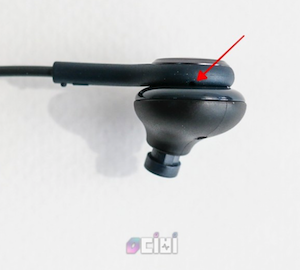























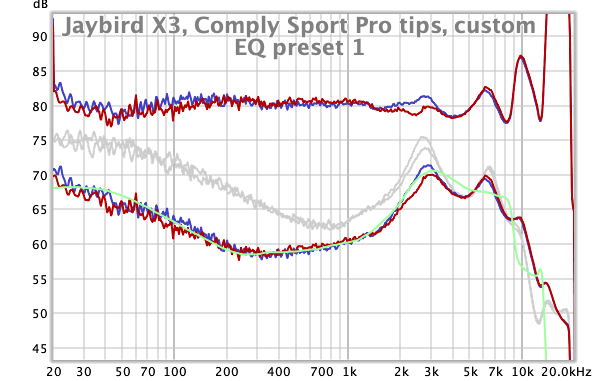


















































![16-bit J-test[1].png 16-bit J-test[1].png](https://cdn.head-fi.org/a/10197600.png)
![24-bit J-test[1].png 24-bit J-test[1].png](https://cdn.head-fi.org/a/10197602.png)












